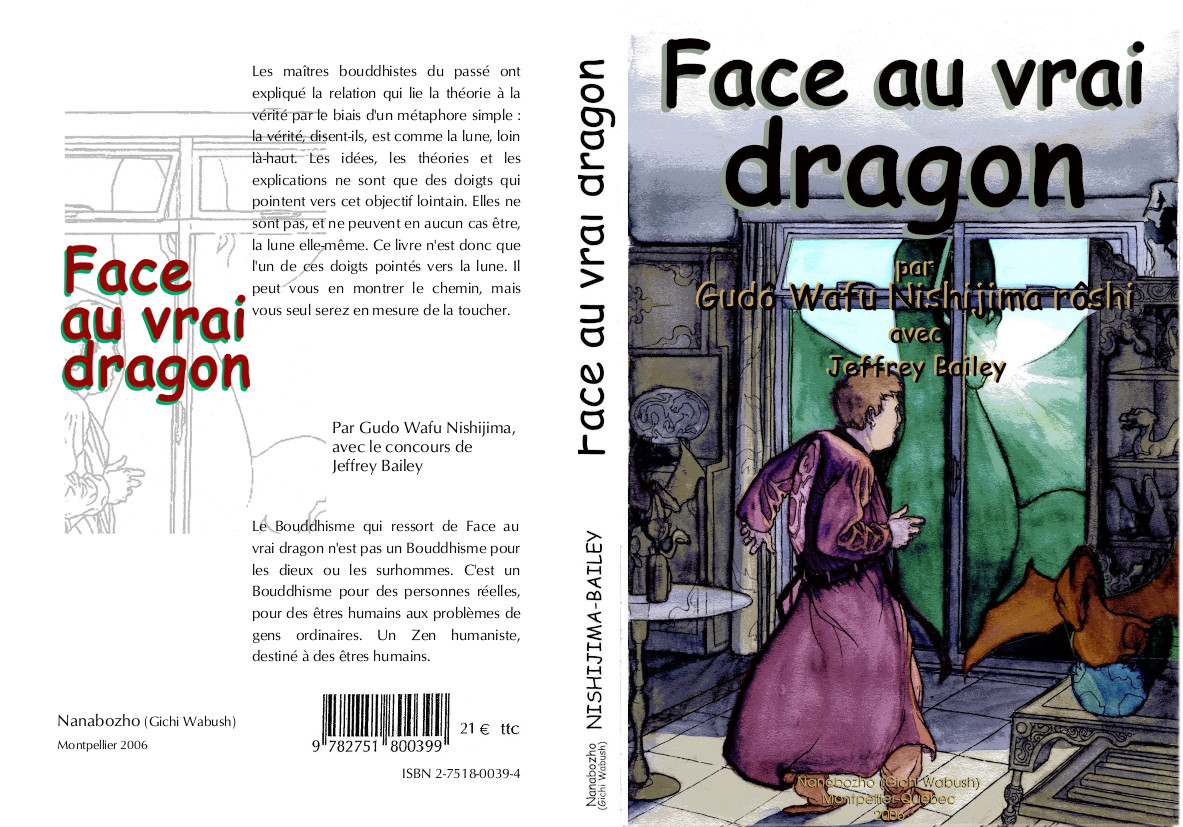 Growing
a Lotus : A series
of exercises for easing up the posture. Too
often does the practice seem so difficult, if not straightaway
impossible for whom is not used to sitting on the ground, and who get
very soon aching knees. This has discouraged more than one to keep on
practicing the essential practice of sitting. This helps to make things
better.
Growing
a Lotus : A series
of exercises for easing up the posture. Too
often does the practice seem so difficult, if not straightaway
impossible for whom is not used to sitting on the ground, and who get
very soon aching knees. This has discouraged more than one to keep on
practicing the essential practice of sitting. This helps to make things
better.
 Master
Gudo :
Look over
some
of Master Nishijima's most important references, especially
his theory
of three philosophies and one reality.
Master
Gudo :
Look over
some
of Master Nishijima's most important references, especially
his theory
of three philosophies and one reality.
 Papers
: Some recent papers. Translations into French of
papers in English, various original French language papers, and some
personal ravings.
Papers
: Some recent papers. Translations into French of
papers in English, various original French language papers, and some
personal ravings.
Doctrine
: Practicing zazen without a sound doctrinal basis often has harmful
effects. Here's a series of documents
which will allow the reader a rational and efficient documentation in
order to feed their practice and avoid navel contemplation...
History
: Various historical documents for the history of Buddhism. Among those:
 Sôtô
Zen Ancestors : A very
important American
site.. Soto Zen is deeply rooted in
the Chinese history of the Tang. Tô (Dong) -- that is to say
East-- refers to Dongshan Liangjie, a contemporary and an acquaintance
to Mazu Daoyi, himself the origin of the Rinzai Rinzai (Linji) lineage,
which is by the way that of Thich Nhat Hanh. Although most
interpretations ascribe the Sô (Cao) to one of Dongshan
Liangjie's students, a minority ascribe it to the monastery of Caoqi,
that of the Sixth Patriarch, Huineng. I believe the latter to be more
likely, since Caoshan (Dongshan's student) had no Dharma following, and
also because Cao appears first, which would be logical if it stood for
Caoqi.
Sôtô
Zen Ancestors : A very
important American
site.. Soto Zen is deeply rooted in
the Chinese history of the Tang. Tô (Dong) -- that is to say
East-- refers to Dongshan Liangjie, a contemporary and an acquaintance
to Mazu Daoyi, himself the origin of the Rinzai Rinzai (Linji) lineage,
which is by the way that of Thich Nhat Hanh. Although most
interpretations ascribe the Sô (Cao) to one of Dongshan
Liangjie's students, a minority ascribe it to the monastery of Caoqi,
that of the Sixth Patriarch, Huineng. I believe the latter to be more
likely, since Caoshan (Dongshan's student) had no Dharma following, and
also because Cao appears first, which would be logical if it stood for
Caoqi.
 Access to
Insight : The
Pali Canon contains some of the
most ancient texts of Buddhism. In those texts may one read what's
nearest to the Buddha's very words.
Access to
Insight : The
Pali Canon contains some of the
most ancient texts of Buddhism. In those texts may one read what's
nearest to the Buddha's very words.
Mahâyana
Sûtras : Mahayana
Buddhism produced lots of texts built up on the general model of the
ancient canonical sutras. Those are as a rule more
verbose and filled with marvelous things, more than in the original
texts. They are nevertheless Buddhist discourses, often very useful if
we want to understand some later developments of Buddhism, as well as
not getting trapped by a too litteral interpretation of the canonical
texts. Although the Buddha never pronouced them, really, on a historical
level, it would not be correct to
say they are not the Buddha's word.
 Humour
: A collection of Buddhist humour translated into French, and mostly
though not exclusively Zen.
Humour
: A collection of Buddhist humour translated into French, and mostly
though not exclusively Zen.
Gallery
: Modern and antique portraits and iconography within a Mahayana
Buddhist thematic.
Links
: A few links towards other sites.
Contact : In order
to write to me, be it by email or traditional mail (How do I like a nice stamp
on an envelope with a handwritten letter in it!)
 My translation of Nishijima Roshi's
book, "To Meet the Real
Dragon", in French
My translation of Nishijima Roshi's
book, "To Meet the Real
Dragon", in French 
